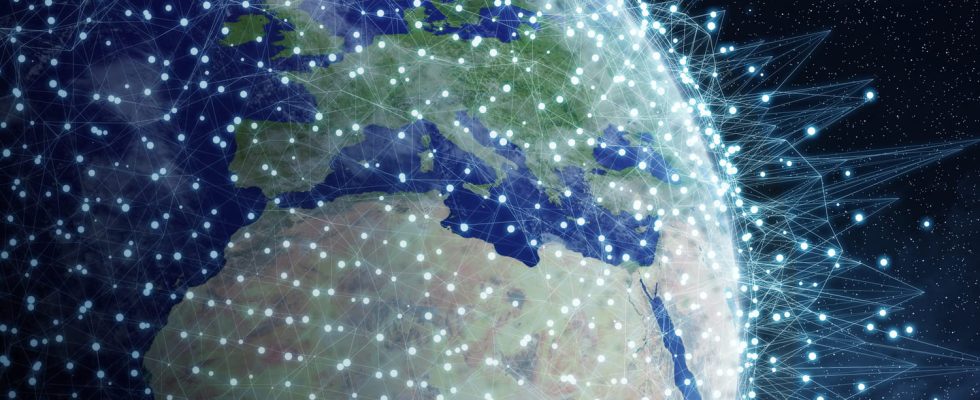Specialists fear that these devices, present in their thousands just a few kilometers from Earth, will become a significant danger for us all.
Are artificial satellites sent by the hundreds into space dangerous? These machines which are in orbit around the Earth are particularly useful, they are notably responsible for the quality of the Internet network or the precision of geolocated data. The race is therefore for the one who will send the most to open up new markets and guarantee their customers the best quality.
This is how mega satellites were born, a set of several hundred small artificial satellites sent into low orbit, that is to say very close to the Earth. This set allows its owner to offer a very high speed network over a very large part of the planet, even in difficult to access areas such as mountain ranges and the open sea. In recent years, these “mega constellations” are increasing, but their long-term impact remains unknown.
Space experts are nevertheless concerned about this developing phenomenon. In addition to Elon Musk’s Starlink satellites and those of OneWeb in Europe already in orbit, Europe is working on the development of another project as well as Amazon and its Kuiper project. In an interview given to The gallery on November 20, 2023, Philippe Baptiste, the president of CNES (National Center for Space Studies) explains that such a phenomenon could ultimately become problematic for low orbit, which risks being saturated by too many satellites. He thus considers that “potentially the entire low orbit could be weakened”.
The multiplication of debris is particularly at the heart of the question. Firstly, with the multiplication of satellites in orbit, the risk of collision greatly increases the presence of debris. Artificial satellites at the end of their life can end up breaking up and therefore creating debris with a random trajectory towards the Earth. According to a study by the Federal Aviation Administration (FAA) carried out for the American Congress last September, the risk of a plane being struck by satellite debris is equal to 0.1%. A risk which should increase to 0.84% in 2035 with this rapid development of mega constellations. This is considerable. The FAA also fears that a person on the ground could be hit by debris every two years in the event of a significant increase in the number of satellites. Anything could therefore be hit by debris which could prove fatal.
Satellites could also contribute to the disruption of the global climate. Indeed, according to Aaron Boley, professor of astronomy and astrophysics at the University of British Columbia, interviewed by the Scientific Reports in May, the aluminum present in the satellites risks polluting the atmosphere when they burn up during deorbiting. This phenomenon could, given the high number of satellites, create a new hole in the ozone layer and therefore further weaken the climate.
Mega constellations are also responsible for light pollution. In an article from National Geographic published in August 2023, David J. Helfand, professor of astronomy at Columbia University, indicates that satellites complicate the work of astronomers. He explains: “The objects we are trying to study, like galaxies and distant stars, are twenty million times less luminous than satellites. So when one of these streaks crosses the image, it obliterates it. completely”.
Experts in the space sector therefore deplore the absence of “international regulation and environmental monitoring” in the words of Aparna Venkatesan, professor in the department of physics and astronomy at the University of San Francisco interviewed by National Geographic.
